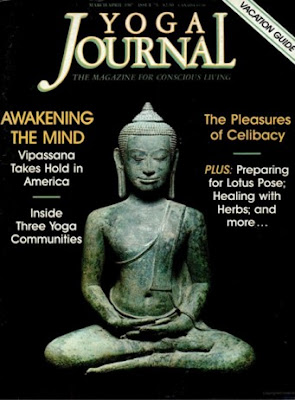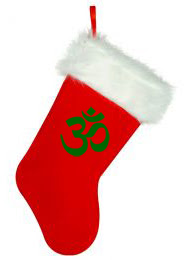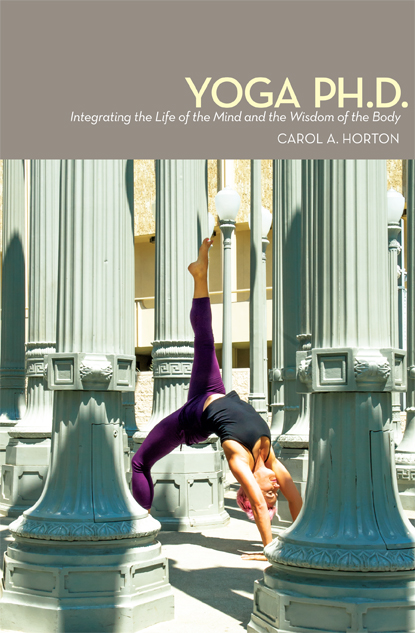According to Yoga Journal’s latest market research, the number of Americans practicing yoga has jumped from 15.8 to 20.4 million – an astonishing 29 percent – since the Great Recession hit in 2008. During the same period, spending on yoga increased even more, skyrocketing from $5.7 billion $10.3 billion – a breathtaking 80 percent gain.
Almost 40 percent of that amount, or $2.2 billion, was spent on apparel. “That speaks to a pretty valuable class of consumers,” notes the Portland Business Journal, “and explains why so many brands – from Victoria's Secret and J. Crew to Under Armor and Adidas – have developed yoga products in recent years.”
Well . . . hooray, right? Yoga is wonderful. So, any growth is good growth. And if the money is flowing, so much the better! The yoga community is contributing to the economy. And with numbers like these, we can rest assured that all these top brands and more will have lots of cute products out when we do our holiday shopping! So, time for the yoga community to break out the champagne and congratulate ourselves for not only beating the recession, but making the world a better place in the process! Right?
Well . . . not so fast. It’s not that simple. Although I’m certainly in favor of popularizing yoga, it’s naïve to believe it’s is cost-free when it comes to maintaining the deeper value and integrity of the practice. As we move into the holiday season, it’s instructive to consider the parallels between yoga and another mass American phenomenon that has similarly experienced an exponential increase in commercialization: that is, Christmas.
Christmas in October
I’m old enough to remember the time when the “holiday season” simply didn’t start until after Thanksgiving. As a child, the fall-to-winter progression had a predictable (and therefore comforting) rhythm. School started. Big transition! Summer’s really over. Lull. Then Halloween! Big excitement. Costumes, trick-or-treating. Lull. Then Thanksgiving. Family time! (For better and worse.) Lull. And then . . . December. Now, it was time to start thinking about Christmas!
I remember: Scanning the night sky for Santa’s sleigh out my bedroom window when I was three. The glittering beauty of the Christmas tree brimming with an eclectic hodge-podge of ornaments. The quiet satisfaction of crafting handmade holiday gifts. The excited anticipation of presents. The magic of holiday snow. And the strange charge of late night Christmas Eve services that spoke to a spiritual longing that I didn’t yet understand.
As I grew older and started my own family, however, Christmas morphed into a time of anxiety and stress. There was too much to do and not enough time to do it. Balancing my children’s excited expectations about the holiday with my worries about spending money was stressful. And then, seemingly everywhere I went, those anxieties were exacerbated by the newly aggressive marketing of the “holiday shopping season” – a phenomenon commonly know as “Christmas creep.”
As the New York Times recently noted:
The idea that holiday marketing efforts would get under way in earnest before Thanksgiving was once startling. But in recent years, ‘Christmas creep’ has become standard operating procedure, leading to jokes like Stephen Colbert’s last week on Twitter: ‘Halloween is right around the corner. You can tell because all the stores are decked out for Christmas.’Whether you celebrate Christmas or not, this steady drumbeat of buy-buy-buy messages has an insidious effect. One market research firm found that almost one-third of American adults now start their holiday shopping in the last week of October – despite the fact that a majority reports feeling resentful of this hyper-extension of the “holiday season.”
Old-School Yoga
If – like me – you started practicing yoga before it boomed into a multi-billion dollar “industry,” it’s easy to see certain parallels in terms of the ever-expanding reach of commercialism here.
When I started my first weekly yoga class way back in the mid-1990s, we met in a dingy church basement. At that time, yoga wasn’t trendy, let along glamorous. Instead, it was vaguely associated with hippies and other remnants of the long-defunct 1960s counterculture.

|
| 1987 |
But my class was excellent. Looking back, two things strike me most about it. First, my teacher was so evidently knowledgeable and committed to her practice that even as a complete beginner who didn’t know the word “asana,” I immediately perceived it. Second, she was fiercely dedicated to teaching in a way that set her students on a path to becoming empowered, independent practitioners.
Every week, without fail, she gently but insistently reminded us that we needed to develop a home practice. Initially, I found this quite strange. After all, I had only started yoga to add a little stretching into my workout routine – nice, but no big deal and nothing special. Eventually, however, I found myself asking my teacher to cut me a new mat off of the giant roll of material she kept in a storage closet. So she brought out her scissors, we measured it out, and she charged me $4. And slowly but surely, I started practicing at home, eventually developing a strong – and personally invaluable – home practice.
Yoga Gets Glamorous
How different that experience was from what I generally see today! The most popular studios in the Chicago area where I live boast trendy mini-boutiques, replete with beautiful clothes, jewelry, and premium mats. The vibe is chic, sleek, luxe. There’s an endless cornucopia of classes, workshops, trainings, and retreats in warm tropical locations to choose from. And never, ever do I hear teachers advocating home practice.
Now, I admittedly enjoy much of this new yoga culture. I like having more classes and workshops to chose from. I enjoy the harmonious feeling spaces that these upscale studios provide (as, in all honesty, taking classes in a basement really wasn’t that nice). At the same time, however, I find that these posh studio environments feed certain anxieties and feelings of alienation. In particular, the tempting array of pricey yoga clothes and jewelry simultaneously makes me feel bad about not having much money to spend and resentful of the consumer-driven mentality they promote.

|
| 2006 |
More broadly, I’m not pleased that the symbolic representation of yoga has been so successfully grafted on to the highly marketable image of the thin, beautiful, bendy yoga babe. While many say that they find photos of size zero models doing advanced asanas in stylish clothing “inspiring,” I tend to find it discouraging. To my mind, such images primarily work to feed our unhealthy psychological cravings for control and perfection – desires which can’t ever be fulfilled, and breed subliminal insecurity and unhappiness.
In this sense, the commercialization of yoga and Christmas produce parallel problems. Your practice can’t work on a deep level if you’re fixating on a hot bod and kickass asana. Your holiday can’t be made happy if you’re swept up in a consumer shopping frenzy. What makes these traditions truly meaningful is something else entirely.
Renegotiating Tradition
Personally, I’ve found that the most effective way for me continue to enjoy what I love about both yoga and Christmas is to find ways to tap back into the spirit of organic growth and spiritual renewal that form my most meaningful experiences of each. Given that my yoga practice is year-round, while Christmas comes only once a year, there are of course important differences here. But the underlying principles are essentially the same.
In a nutshell, I’ve found that I need to be quite deliberate – and determined – about clearing the time and space necessary to create opportunities to connect deeply with myself and others. It is authentic human connection (which includes connection with one’s deeper self) that makes yoga and Christmas (or whatever alternative holiday you may celebrate) meaningful, rich, and soul-satisfying.
So, I make sure that I carve out time to practice almost every day. I hold the space for the weekly yoga class I go to with some friends inviolable unless there’s a genuine crisis. When I teach, I look for ways to encourage students to develop their own practice, even if it’s as simple (and powerful) as a few minutes of conscious breathing. And when I write about yoga, I set the intent of inspiring others to connect with what they find most valuable about it in their own way.
Likewise, I’ve found that establishing some of my own Christmas rituals allows me to connect to what I love about the holiday, and keep much of the stress and irritation at bay. So, I make a date with one of my best girlfriends for a special day of yoga, lunch, and holiday shopping at locally-owned businesses in some cool neighborhood we’d both like to explore. I make sure to take a long holiday walk on a day when the weather is crisp and clear. I dedicate an evening or two to watching classics like “The Grinch” with my family. I make my annual long-distance phone call to an old friend from college. I invest time in preparing a special Christmas Eve candlelit dinner.
To be sure, the material wealth generated by our consumer culture is a blessing in many ways. I’m grateful to have the material comforts in my life that I do, and don’t want to take them for granted. But I also see how the aggressive marketing of consumption – whether of holiday goodies or cute yoga gear – as an end in itself erodes our connection to what’s meaningful. And whether or not you observe Christmas or practice yoga, we’re all in the same boat on this one. We simply need to invest the time to connect authentically with ourselves and others because it nourishes, sustains, and renews us. And it’s appropriate that as the longest night of the year approaches, we create rituals, holidays, and observances that remind us to keep our eyes on that spiritual light.
A slightly condensed version of this essay was originally published in Common Ground magazine (Dec. 2012-Jan. 2013).



